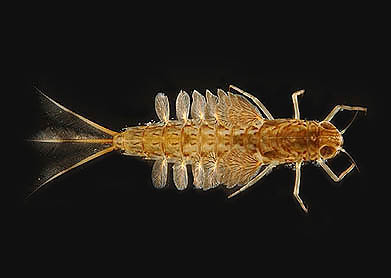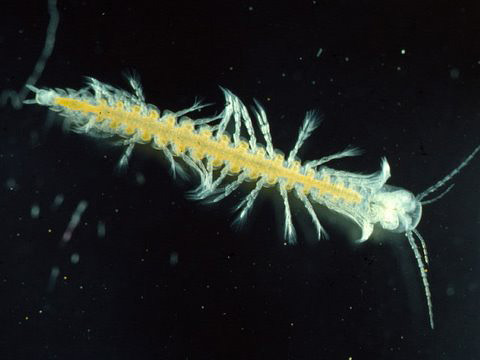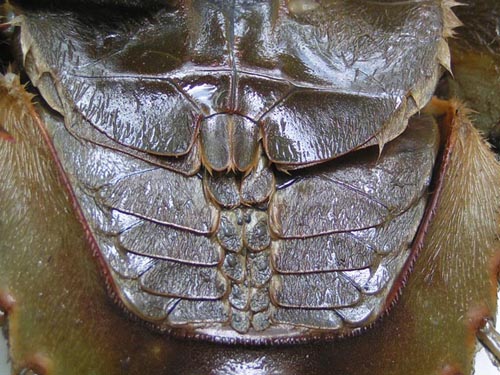A few months ago I was asking myself: why, among all terrestrial Arthropoda, insects came out as the obvious exceptional winners? That is, why did only Insecta develop killer features like flight, metamorphosis and eusociality that allowed them to be the most successful group of pluricellular life?
Well, it seems we have a tentative answer about flight. If insects fly and spiders do not, it is because of… gills.

Insect wings seem to be, in fact, a modification of ancestral crustacean gills. It was long suspected: the so-called naiads, the larval forms of mayflies, often have wing-like gills, indicating that gills and wings have a sort of relationship. But proof of a true evolutionary relationship first came to light in a landmark 1997 study by Averof and Cohen . They discovered that nubbin and apterous, two crucial genes that determine the development of wings (most crucially, that specify wing development: they say to a patch of cells “you will become a wing”) , are in fact expressed by crustacean limbs in the very same pattern. Since there is strong evidence that insects are close relatives of crustaceans, this is much more than a coincidence (see here , here for examples: in fact insects are considered to actually be Crustaceans, and are considered together in a group called Pancrustacea. The closest living relatives of insects are a group of small, obscure shrimp-like marine crustaceans called the Xenocarida.)

Did I say limbs? Didn’t we talk about gills? Well, you should know that crustaceans can breathe with their limbs. Crustacean limbs are often biramous, that is, they split in two, one branch being the leg, the other being coopted to several functions -including, well, being a gill. Insecta have long been classified as uniramous(one branch only), in times when the distinction between having biramous and uniramous limbs was considered to be evolutionarily relevant. Not only do we know today that it is no longer the case: we now know that insects are truly still partially biramous crustaceans, where the non-leg limb branch has become a wing!
What about spiders? Well, spiders on the other hand are not close relatives of Crustaceans: they split off long before. In fact they belong to a totally separate clade of arthropods, the Chelicerata (which includes Arachnida and a few odd taxa like Merostomata and the enigmatic Pycnogonida). The division between Chelicerata and other arthropods is the earliest and deepest in the Arthropoda tree.
This also reflected on their limb evolution. The gene expression in “walking limbs” is not conserved clearly between Chelicerata and Crustaceans. The chelicerata also have limb-derived gills, but apparently indipendently, and in a uniramous way: their posterior legs became what we call book gills in the marine Merostomata and evolved in terrestrial arachnida to form book lungs. They are so called because they are made of thousands of thin leaf-like membranes superimposed together.

So, spiders simply continued to use their gills to breathe, from the sea to the air. Insects instead found themselves evolving gills into wings, and learned to fly. No doubt the differences in anatomy and gene expression between Crustacea and Chelicerata contributed. I suspect that simply having parallel rows of legs and wing-like gills was a much more meaningful combination, for flying, than using rear-positioned gills (imagine a bug flying with wings on its tail instead than in the middle and you get what I mean)
And how did insects learn to fly? It seems that they did it in the same way all flying animals evolved flight: they started by gliding. Interestingly, primitive wingless insects still glide off trees. It seems that insects just want to conquer the air.
Thanks to Valentina Sarno for revisioning this post!
Amazingly interesting post Massimo. I would never bet on myself reading such a long piece about… insect flight 🙂 I’m glad that I did, though.
Cheers,
Ruben
Thanks!
Really enjoyed this post! Love insects and have done a bit of research on insect flight – I think you have explained a likely theory of why insects are so successful beautifully.